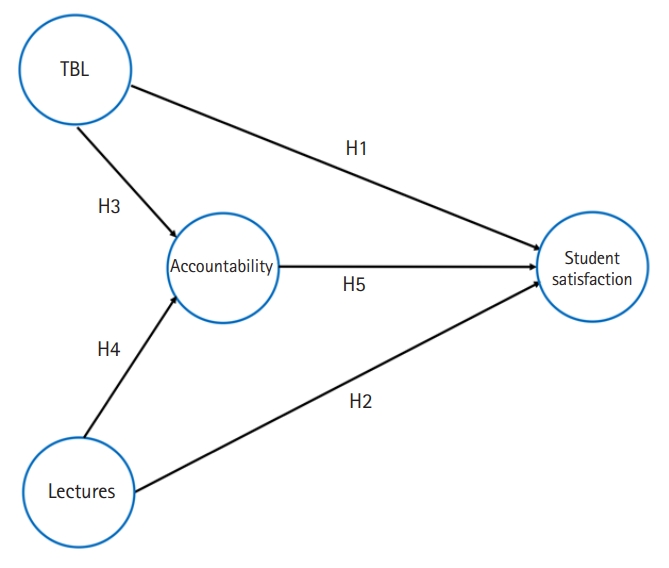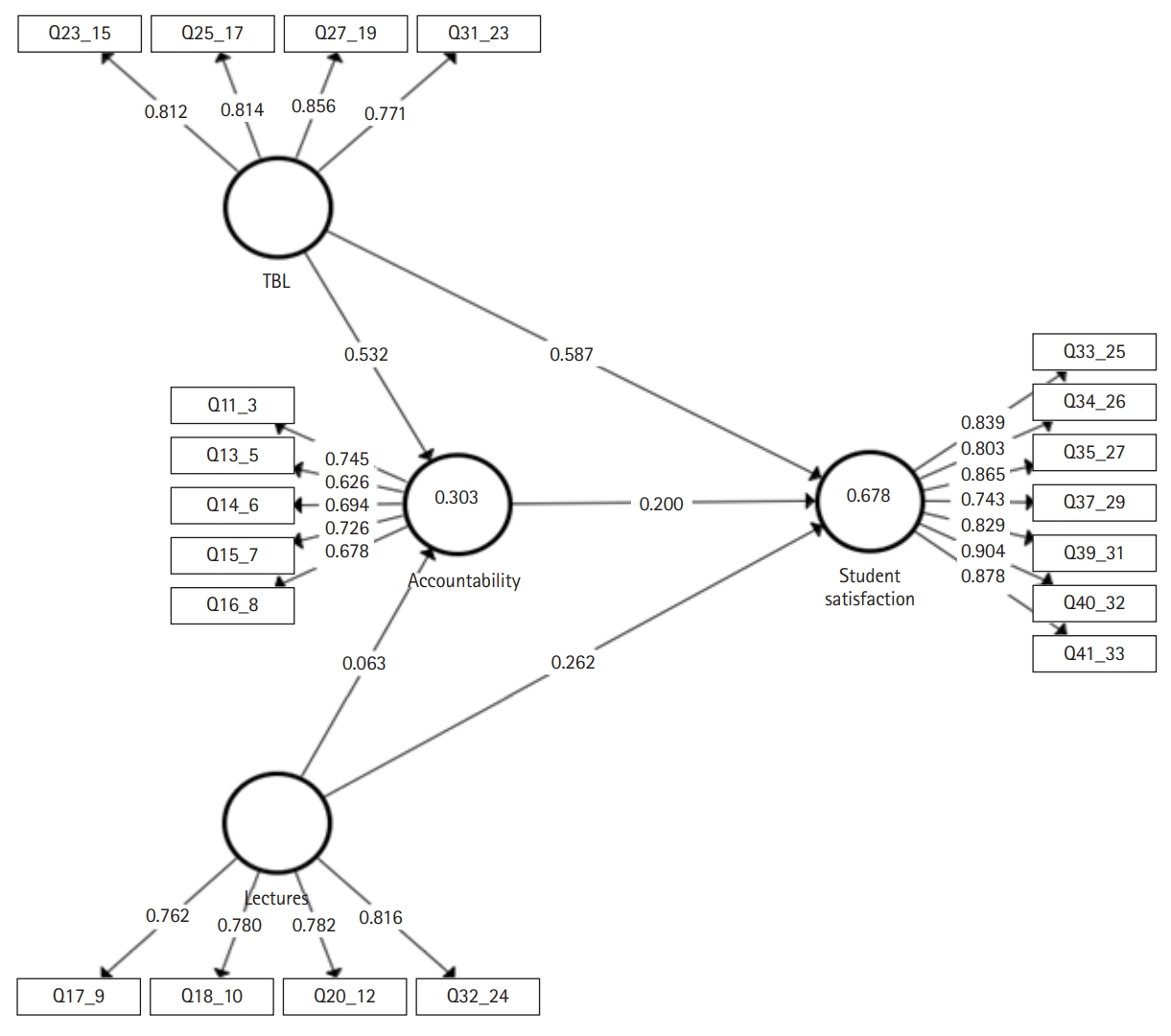Articles
- Page Path
- HOME > J Educ Eval Health Prof > Volume 16; 2019 > Article
-
Research article
A conceptual model for students’ satisfaction with team-based learning using partial least squares structural equation modelling in a faculty of life sciences, in the United Kingdom -
Andrea Manfrin1*
 , Bugewa Apampa2
, Bugewa Apampa2 , Prabha Parthasarathy3
, Prabha Parthasarathy3
-
DOI: https://doi.org/10.3352/jeehp.2019.16.36
Published online: November 13, 2019
1School of Pharmacy and Biomedical Science, Faculty of Clinical & Biomedical Sciences, University of Central Lancashire, Preston, UK
2Sussex Pharmacy, School of Life Sciences, University of Sussex, Falmer, UK
3Faculty of Medicine, Imperial College, London, UK
- *Corresponding email: AManfrin@uclan.ac.uk
© 2019, Korea Health Personnel Licensing Examination Institute
This is an open-access article distributed under the terms of the Creative Commons Attribution License (http://creativecommons.org/licenses/by/4.0/), which permits unrestricted use, distribution, and reproduction in any medium, provided the original work is properly cited.
Figure & Data
References
Citations
Citations to this article as recorded by 

- The predictive power of electronic reporting system utilization on voluntary reporting of near-miss incidents among nurses: A PLS-SEM approach
Mohammed Abdalraheem Alalaween, Noorliza Karia
Belitung Nursing Journal.2024; 10(1): 15. CrossRef - Psychometric properties of Clinical Learning Environment Inventory and its association with Moroccan nursing students’ satisfaction: A PLS-SEM approach
Khadija Saka, Mohamed-Yassine Amarouch, Mohamed El Amine Ragala, Zarrouq Btissame, Adel Tahraoui, Youness El Achhab, Jaouad El-Hilaly
Belitung Nursing Journal.2023; 9(1): 86. CrossRef - The relationship between the pharmacist's role, patient understanding and satisfaction during the provision of a cost‐effective pharmacist‐led intervention
Andrea Manfrin
Journal of Evaluation in Clinical Practice.2023; 29(5): 825. CrossRef - Transitioning to Individual Learning Paths in the Opinions of Students and Teachers: the Case of the University of Tyumen
Tatyana Gavrilyuk, Taisia Pogodaeva
Sociological Journal.2023; 29(2): 51. CrossRef - Equation Modelling of Automotive Textiles for Car Seat Covers in the Ghanaian Upholstery Industry
Dr. Richard Selase Gbadegbe, Edem Kwami Buami, Charles Kumah, Bijou Asemsro, Prof. Maxwell Selase Akple
International Journal of Innovative Technology and Exploring Engineering.2023; 12(12): 15. CrossRef - Virtual Physical Education: Google Meet as an alternative platform for learning skill-based concepts
Joseph Lobo
Physical education of students.2022; 26(6): 296. CrossRef - A SEM-NCA Approach towards Social Networks Marketing: Evaluating Consumers’ Sustainable Purchase Behavior with the Moderating Role of Eco-Friendly Attitude
Pejman Ebrahimi, Datis Khajeheian, Maria Fekete-Farkas
International Journal of Environmental Research and Public Health.2021; 18(24): 13276. CrossRef

 KHPLEI
KHPLEI




 PubReader
PubReader ePub Link
ePub Link Cite
Cite



